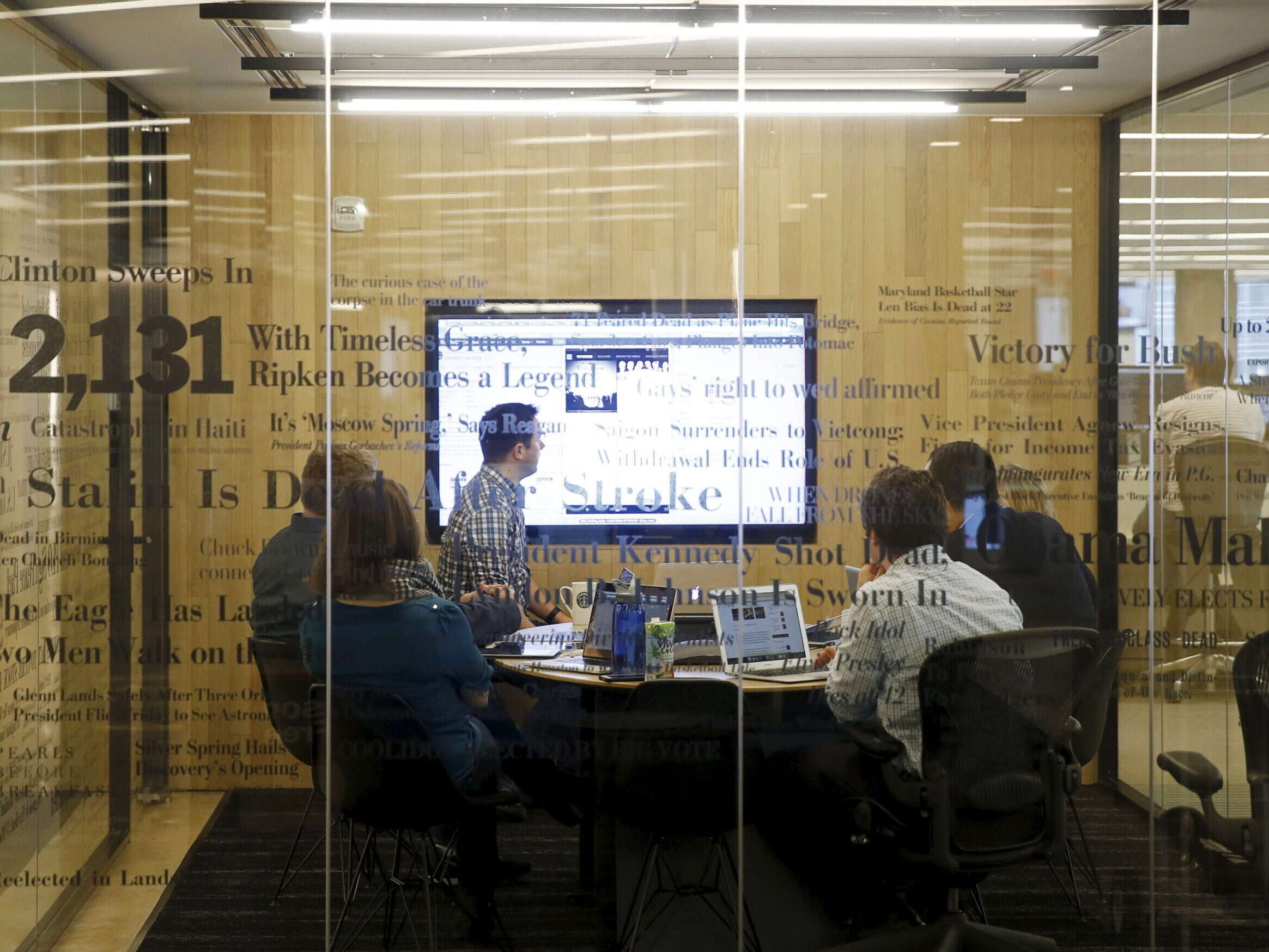
The Washington Post has become one of a handful of newspaper brands to launch a FAST channel and is already benefitting from people “spending a lot of time with our journalism” as a result.
FAST (free ad-supported streaming television) services have grown in popularity in recent months, with Amazon reporting a 300% growth in FAST viewership on its platforms.
Despite the novel acronym, FAST channels are similar to conventional television channels: they run continuously and have scheduled programming, but are broadcast via the web.
The format has had one of its first entertainment hits with mockumentary series Jury Duty, but news providers are yet to launch FAST channels en masse.
The Washington Post’s director of video and senior editor Micah Gelman told Press Gazette the publisher discussed launching a FAST channel “for a while” before going live earlier this month.
Why did The Washington Post get into FAST?
Output on the newspaper’s channel is a mix of its video back catalogue and new live content, which will sometimes interrupt scheduled programming similar to a conventional 24-hour news channel.
Gelman, previously a director of digital strategy at Discovery and an executive producer at Associated Press, said the Post’s “tentpole live coverage of major events” such as election nights “tends to be among the most watched amongst all publishers. And so I think that’s just part of what we’ve become as an organisation.”
The Washington Post has more than 70 people working in video roles – with that count excluding the opinion and live events teams – making its video team larger than some TV stations.
“Yes, we are,” Gelman agreed. “But we also are a big newsroom! And visual storytelling is a real critical part of being a modern news organisation. Compared to the rest of the organisation we’re just a small percentage, but we are a mighty team.”
Gelman said the Post creates “a lot of really compelling video journalism across the company, and we’re always looking for more places for people to watch that”.
That was the same logic behind the publisher’s efforts on Youtube and Tiktok. Gelman said they are “always looking for places to bring in new audience” and help boost the profile of the Post among a wider audience of possible subscribers.
Gelman noted the FAST channel features a QR code which, if scanned, sends viewers to a Washington Post subscription sign-up page.
[Read more: Youtube for publishers – Sun and Guardian explain how to succeed on video platform]
Launching the FAST channel
Gelman said the publication decided against launching the FAST channel with a regular scheduled newscast.
“We didn’t necessarily want to come out of the gate with a similar-looking style of storytelling to others.
“What we decided to do was to create schedules that are really thematic along the tentpole areas of our storytelling. So every other hour of the day, you’ll get all of our latest video – fresh, updated storytelling.
“It’s supplemented off-hours with more of our newspaper interviews, whether it’s business and technology or culture, all interruptible by live breaking news.
“We’re not trying to programme a 24/7 live experience from a production standpoint because I think people are going to want to dip in and dip out, and so we want to be able to make sure that we’re providing something interesting at any moment that they come in.”
But he said the Post was looking to attract audiences “more used to a TV-style experience”.
“It’s a very sticky experience, and people watch for a long time. They’re spending a lot of time with our journalism.”
‘Evolving view’ on link with subscriptions
Gelman said there remains an “evolving view” to what extent a FAST channel can drive subscriptions.
“The FAST channel is a good example of where we want to experiment and see how we can drive people on other surfaces to become Washington Post subscribers,” he said.
“We know visual journalism in general – not just video, but graphics and photos and other things – are central to our storytelling. And so to the extent that we can make our storytelling as dynamic and fresh as possible, a fresh approach helps the business overall.”
In the meantime, some revenue is guaranteed by the FAST channel’s in-stream ads. Gelman said ad sales are handled by Amazon Freevee, the platform on which it is hosted.
Asked whether advertisers are hesitant to place their brands alongside news content on a FAST channel as they sometimes are with programmatic ads online, Gelman said: “One of the more attractive things about FAST is it’s so like television, and so I think there is less of that worry about adjacency.
“You could have CNN on and be watching a serious story and there’s commercial breaks. It’s not quite like the internet experience where it’s like, ‘I don’t want to put my ad in front of my video’.”
He said the company does tag content on the channel that might be sensitive. “But there’s not as much concern about that in general in the TV-style ad buy.”
The Washington Post’s FAST channel is currently only available on Amazon Freevee, where it launched with an exclusivity window, but Gelman said from June it will launch on other platforms.
“I can’t talk about which ones yet. Freevee has been a terrific launch partner, but our plan is to have wide distribution for this channel,” he said.
“FAST channels are in a lot of different environments and so our view is we should be as wide as possible in trying to attract an audience.”
Email pged@pressgazette.co.uk to point out mistakes, provide story tips or send in a letter for publication on our "Letters Page" blog
